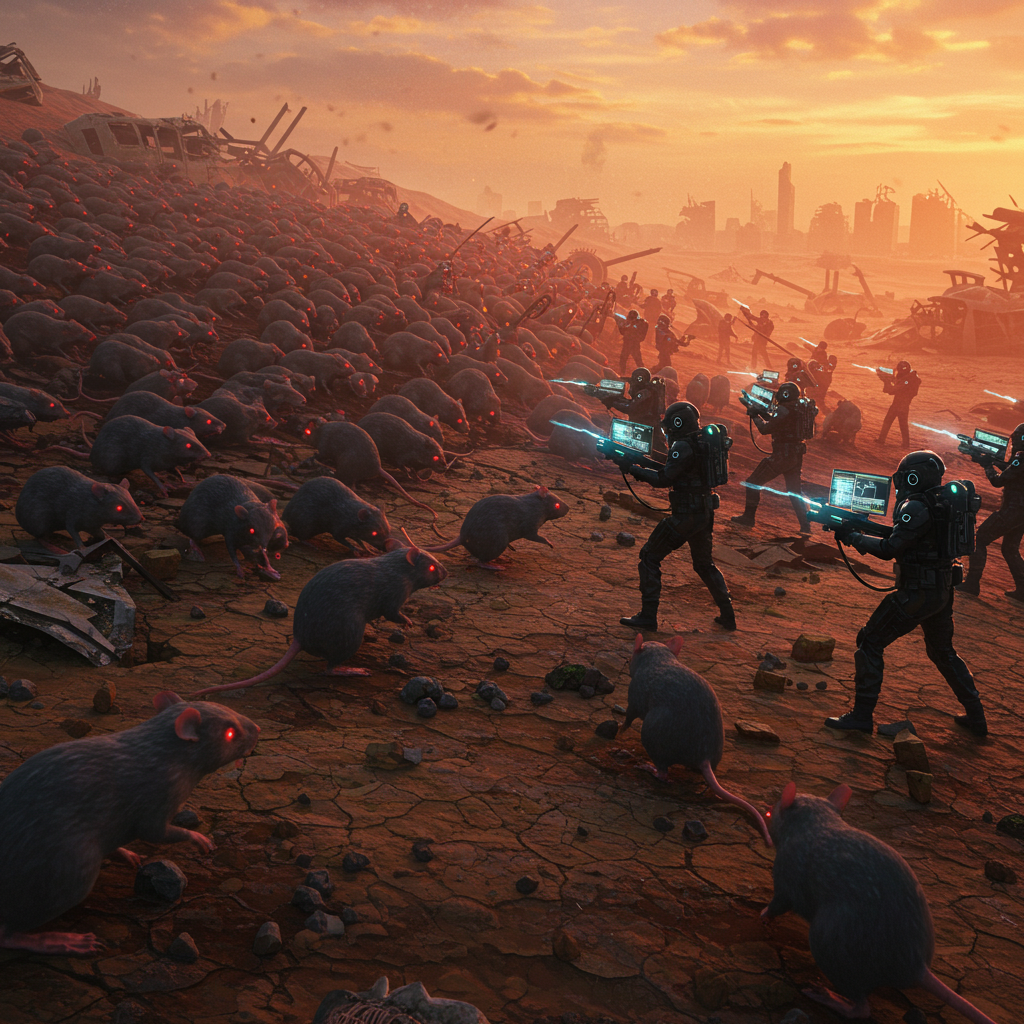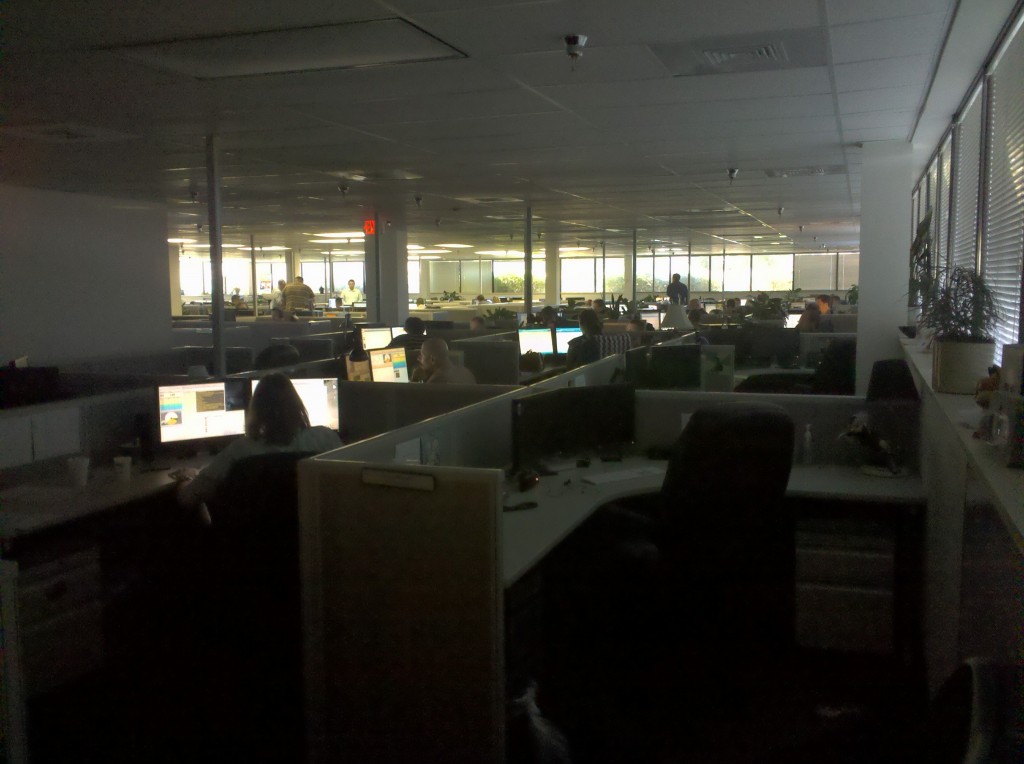According to a recent Census Bureau report nearly 1 in 6 US citizens are now officially poor.
This report prompted a number of posts when it arrived in my Facebook account ranging from fear and depression to anger over CEO salaries which have soared, and outsourcing practices which have contributed to unemployment, a loss of industrial capacity, and a loss of our ability to innovate.
There seems to be a lot of blame to go around, a lot of hand-waving and solution pedaling, and plenty of political posturing and gamesmanship. But everything I’ve heard so far seems to miss one key point that I believe sits at the root of all of this.
We chose this and we can fix it!
When you look at the situation systemically you quickly realize that all of the extreme conditions we are experiencing are driven by a few simple factors that are amplified by the social and economic systems we have in place.
The economic forces at work in our country have selected for a range of business practices that are unhealthy and unsustainable. None the less, we have made choices consistently and en-mass that drive these economic forces and their consequences.
For example. Think about how we measure profitability. Generally we do the math and subtract costs from revenues. That seems simple enough, logical, and in fact necessary for survival. However, just like the three (perfect) laws of robotics ultimately lead to a revolution that overturns mankind (See I Robot), this simplistic view of profitability leads to the economic forces that are driving our poverty, unemployment, and even the corrupting influence of money on our political system. Indeed these forces are selecting for business practices and personal habits that reinforce these trends so that we find ourselves in a vicious downward spiral.
Here’s how it works — At the consumer level we look for the lowest price. Therefore the manufacturers must lower costs in order to maintain profits. Reducing costs means finding suppliers that are cheaper and finding ways to reduce labor costs by reducing the work force, reducing wages, and outsourcing.
Then it goes around again. Since fewer people are working and those who are employed are earning less there is even greater downward pressure on prices. Eventually so much pressure that other factors, such as quality, reliability, brand character, and sustainability are driven out of the system because the only possible choice for many becomes the product with the lowest price.
This process continues until the quality of the product and, more importantly, the quality of the product’s source is no-longer important. With the majority of the available market focused on the lowest price (what they can afford) and virtually all innovation targeted on reducing costs, the availability of competing products of higher quality shrinks dramatically and as a result of short supply the price quickly moves out of reach of the majority of the marketplace. This is also true for businesses sourcing the raw materials, products, and services that they use to do their work. As time goes on it becomes true of the labor market also — since there are very few high value jobs with reasonable pay there are also very few high quality workers with skills, and very little incentive to pursue training.
Remarkably, at a time when information technology and connectivity are nearly universal the cost of education has risen dramatically and the potential benefit of education has fallen just as much — there simply are not enough high value jobs to make the effort worth while. Precisely the opposite should be true. Education should be nearly free and universal and highly skilled workers should be in high demand!
The economic forces set up by our simplistic view of profitability lead directly to the wealth disparity we see today where the vast majority have almost no wealth and are served by a large supply of cheap low-quality products while a very small minority lives in a very different world with disproportionately large wealth, power, and access to a very small quantity of high quality products and services.
Having reached this condition additional forces have taken hold to strengthen these extremes. Consider that with the vast majority of consumers barely able to purchase the low quality products that are currently available it is virtually impossible for anyone to introduce improved products and services. One reason is that such a product would likely require a higher price and would be difficult to sell in the current marketplace. Another is that any product that is successful is quickly dismantled by the extremely powerful incumbent suppliers who, seeing a threat to their dominance, will either defeat the new product by killing it, or absorb it by purchasing it outright.
An unfortunate side-effect of this environment is that most business plans written today by start-ups go something like: 1.Invent something interesting, 2.attract a lot of attention, 3.sell the company to somebody else for a big bag of money.
These plans are all about the exit strategy. There is virtually no interest in building anything that has lasting value and merely suggesting such a thing will brand you as incompetent, naive, or both. Sadly, in case you missed it, this also leads to a kind of standard for evaluating sound business decisions. The prevailing belief is that sound business decisions are short-term and that long-term thinking is both too risky and too costly to be of any value.
Our purchasing practices aren’t the only driver of course. Another important driver is finance and specifically the stock market. These same pure-profit forces drive smaller vendors out of the marketplace because they lack the access to capital and economies of scale required to compete with larger vendors. As a result smaller vendors are killed off or gobbled up by larger companies until there are very few of them (and very few choices for consumers). In addition, the larger companies intentionally distort the market and legal environments to create barriers to entry that prevent start-ups from thriving.
All of these large, publicly traded companies are financed by leveraging their stock prices. Those stock prices are driven again by our choices – indirectly. Most of us don’t really make any direct decisions about stock prices. Instead we rely on largely automatic systems that manage our investment portfolios to provide the largest growth (profit again). So, if one company’s growth looks more likely than another these automated systems sell the undesirable company and buy the more desirable company in order to maximize our gains. The stock price of the company being sold drops and the stock price of the company being purchased rises. Since these companies are financed largely by their ability to borrow money against the value of their stock, these swings in stock price have a profound effect on the amount of money available to those companies and to their ability to survive.
In the face of these forces even the best company manned by the best people with the best of intentions is faced with a terrible choice. Do something bad, or die. Maybe it’s just a little bad at first. Maybe a little worse the next time around. But the forces are relentless and so eventually bad goes to worse. Faced with a globally connected marketplace any companies that refuse to make these bad choices are eventually killed off. It is usually easier and less costly to do the wrong thing than it is to do the right thing and there is always somebody somewhere willing to do the wrong thing. So the situation quickly degrades into a race to the bottom.
In this environment, persons of character who refuse to go along with a bad choice will be replaced with someone who will go along. Either they will become so uncomfortable with their job that they must leave for their own safety and sanity, or they will be forcibly removed by the other stakeholders in the company. This reality is strongest in publicly traded companies where the owners of the company are largely anonymous and intentionally detached from the decisions that are made day-to-day.
The number of shares owned determines the voting strength of a stockholder. If most of the stock of your publicly traded company is owned by investment managers who care only about the growth of your stock price then they will simply vote you off the board if your decisions are counter to that goal. If you fight that action they will hire bigger lawyers than yours and take you out that way. For them too, this is a matter of survival because if they don’t “play the game” that way then their customers (you and I with retirement accounts etc) will move our money elsewhere and put them out of a job.
These situations frequently tread into murky areas of morality due to the scale of the consequences. One might be lead to rationalize: On the one hand the thing we’re about to do is wrong, on the other hand if we don’t do it then thousands of people will lose their jobs, so which is really the greater good? Discomfort with a questionable, but hidden, moral decision — or the reality of having to fire thousands of workers? Then, of course, after having lived and worked in an environment of questionable ethics for an extended period many become blind to the ethics of their decisions altogether. That’s where the phrase “It’s just business, nothing personal…” comes from.
Eventually these large companies are pressured into making choices that are so bad they can’t be hidden, or are so bad that they are illegal! So, in order to survive they must put pressure on our political systems to change the laws so that they can legally make these bad choices, or at least so they can get away with making them.
These forces then drive the same play-or-die scenarios into our political system. If you are in politics to make a difference you will quickly discover that the only way to survive is to pander to special interests. If you don’t then they will destroy you in favor of politicians who will do what these large corporations need in order to survive.
It seems evil, immoral, and just plain wrong, but it’s really just math. There is nothing emotional, supernatural or mysterious at work here. In much the same way sexual pressures drive evolution to select for beautiful and otherwise useless plumage on the peacock, our myopic view of profitability drives economic forces to select for the worst kinds of exploitation, corruption, and poverty.
So what can we do about it?
It seems simplistic but we all have the power to radically change these forces. Even better, if we do that then the tremendous leverage that is built into this system will amplify these changes and drive the system toward the opposite extreme. Imagine a positive spiral instead of a negative one.
There are two key factors that we can change about our choices that will reverse the direction of these forces so that the system drives toward prosperity, resilience, and growth.
1. Seek value before price. By redefining profitability as the generation of value we can fundamentally change the decisions that are required for a company to survive, compete, and thrive. Companies seeking to add value retain and develop skilled workers, demand high quality sources, and require integrity in their decision making. They also value long-term planning since the best way to capitalize on adding value is to take advantage of the opportunities that arise from that added value in the future.
2. Seek transparency. In order for bad decisions to stand in the face of a marketplace that demands value above price there must be a place to hide those decisions. Transparency removes those hiding places and places a high premium on brand development. As a result it becomes possible to convert difficult decisions into positive events for the decision makers in the company, and ensures that they will be held accountable for the choices they make.
I blasted through those pretty quickly because I wanted to make the points before getting distracted by details. So they might seem a bit theoretical but they are not. For each of us there are a handful of minor adjustments we can make that represent each of these two points.
And, if you’re thinking that a few of us can’t make any significant change then think again. The bipolar system we have now is so tightly stretched at the bottom that a tiny fraction of the market can have a profound impact on the system. Profit margins are incredibly thin for most products. So thin that a persistent 10% reduction in volume for any particular vendor would require significant action on their part, and anything approaching 1% would definitely get their attention. If you couple that with the fact that the vast majority of the population belongs to this lower segment of the market then you can see how much leverage we actually do have to change things.
Consider, for example, that the persistence of a handful of organic farmers and the demand generated by their customers has caught the attention of companies as large as WalMart. They are now giving significant shelf space to organics and are actively developing that market.
Putting Value Before Price
While we’re on the subject, the food inc movie site has a list of things you can do to put value before price when you eat. These are good concrete examples of things we can do – and they can be generalized to other industries.
In general this boils down to a few simple concepts:
- Look for opportunities to chose higher value products over lower value products wherever possible. This has two important effects. The first is that you’re not buying the lower value product and so given the razor thin margins on those products the companies making them will be forced to quickly re-think their choices. The second is that you will instantly become part of a marketplace that supports higher value products. When the industry sees that higher value wins over lower value they will move in that direction. Given how tightly they are stretched on the low end we should expect that motion to be dramatic – it will quite literally be a matter of survival.
- Look for opportunities to support higher value companies. Demonstrating brand loyalty to companies that generate value not only sends a clear message to the industry that generating value matters, but it also closes the equation on financing and investment. This ensures that the money will be there to support further investments in driving value and will also convert your brand loyalty into a tangible asset. Decision makers will pay close attention to loyal customers because the reality of that loyalty is that it can be lost.
- Be sure to support the little guys. Large organizations are generally risk averse and slow to change. Smaller, more innovative companies are more likely to provide the kinds of high value alternatives you are looking for. They are also more likely to be sensitive to our needs. Supporting these innovative smaller companies provides for greater diversity, which is important, but it also sets examples for new business models and new business thinking that works. A successful start-up that focuses on generating value for their customers serves as a shining example for others to follow. We need more folks like these in our world and the best way to ensure they will be there is to create a demand for them — that means you and me purchasing their products and singing their praises so they can reach their potential.
A few finer points to make here… I’m not saying that anyone should ignore price. What I am saying is that price should be secondary to value in all of our choices. Pure marginal profit decisions lead to some terrible systemic conditions. We need to get that connection clear in our heads so I’ll say it again. If you fail to make value your first priority before price then you are making a choice: You are choosing poverty, unemployment, and depression.
This larger view of rational economics may not always fit into a handy formula (though it can be approximated), but making value a priority will select for the kinds of products, services, and practices that we really want. Including this extra “value factor” in your decisions will bring about industries that compete and innovate to improve our quality of life and our world in general. That kind of innovation leads to increased opportunities and a higher standard of living for everyone. A virtuous circle. Those are the kinds of industries we want to be selecting for in the board room, on main street, and at that ballot box.
Seeking Transparency
One of the difficult things about seeking value is the ability to gauge it in the first place. Indeed one of the tricks we have learned to borrow from nature is lying! Just as an insect only needs to look poisonous in order to keep it’s predators away, a product, service, or company only needs to give the appearance of high value if we can be fooled. The first goal of seeking transparency addresses that issue. Here are some general guidelines for seeking transparency.
- Demand Integrity from the institutions you support. Be vocal about it. There should be a heavy price to pay for any kind of false dealing, false advertising, or breach of trust. Just as brand loyalty has value, so does the opposite. If a company stands to lose customers for long periods (perhaps forever) after a breach of trust they will quickly place a dollar figure on those potential losses and even the most greedy of the bunch will recognize that there is value in integrity. More precisely, the risk associated with making a shady decision will be well understood and clearly undesirable.The immediate effects of associating integrity with brand value will be monetary and will drive decisions for the sake of survival. However, over the long term this will select for decision makers who naturally have and value integrity since they will consistently have an advantage at making the correct decisions. When we get those guys running the game we will be on solid footing.
- Get close to your decisions and make them count. One of the key factors that cause trouble in the stock market is that most of the decisions are so automatic that nobody feels any real responsibility for them. As long as the right amount of money is being made then anything goes. That’s terrible! You should know how your money is invested and you should avoid investing in companies that make choices you don’t agree with.If you think about it, your money is representing your interests in these companies. If you let it go to a company that does something bad (you decide what that is), then you are essentially endorsing that decision. Don’t! Instead, invest in companies that do good things, deal honestly, and consistently add value. That way your money is working for you in more ways than one and you have nothing to regret.
- Seek Simplicity and develop a healthy skepticism for complexity. Certainly some things are complex by their nature but one of the best ways to innovate and add value is to simplify those things. Complexity also has a way of hiding trouble so that even with the best of intentions unintended consequences can put people in bad positions. That’s not good for the seller or the buyer, nor the fellow on the shop floor, etc. Given a choice between otherwise equal products or services that are simple or complex, chose the simpler version.
- Communicate about your choices and about what you learn. These days we have unprecedented abilities to communicate and share information. Wherever you have the opportunity to let a company know why you chose them, or to tell the other guys know why you did not chose them, be sure to let them know. Then, be sure to let your friends know – and anyone else who will listen. The good guys really want and need your support!
Another key point about communicating is that it gives you the power that marketing firms and politicians wish they had. Studies show that we have become so abused by marketing efforts that advertisements have begun to have a negative effect on sales! The most powerful positive market driver is now direct referrals through social media. Therefore one of the most powerful tools we have to change things for the better is to communicate with each other about our choices and to pass on the message that our choices matter. That kind of communication can cut through a lot of lies. By all means – be careful and do your research. Then, make good choices and tell everybody!






